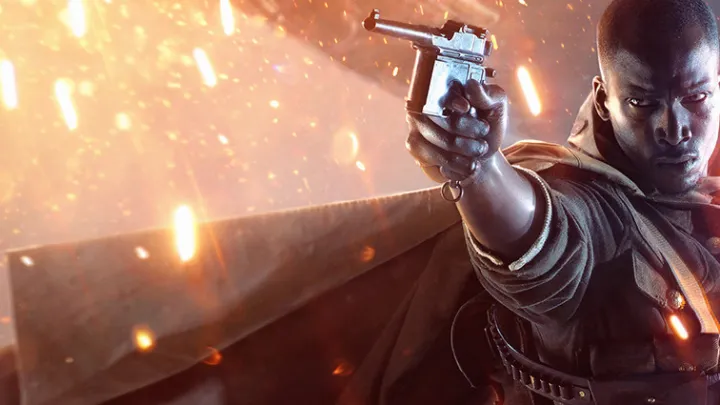New Storytelling Electives Track at CGMA

Storytelling is at the heart of everything an artist does in the entertainment industry. Everyone has ideas; but how to take that idea/sketch/napkin drawing and build it into a story with relatable characters and a solid structure is what CGMA’s Storytelling and IP Development Program is about.
Companies like Netflix, Hulu, Amazon, and more are spending over 12 billion dollars combined in 2018 on original content. That being said, the demand for great storytellers has never been higher.
Anyone looking to develop and challenge themselves to be competitive in the industry, whether it be through Concept Art, Comics, Film Making, Storyboarding, or Character/Environment Design, should consider strengthening their visual voice with this program.
If you have any questions regarding registration or portfolio review requests, please contact the CGMA Admissions department here: registration@cgmasteracademy.com or call by phone at (818) – 561 – 9542.
With Mark Walton– Story Artist
This is an introduction course where you will learn some techniques for visual storytelling. It will cover methods and exercises to help you generate ideas and learn tips and tricks used in story boarding. The assignments will help you build a starter portfolio for story boarding and equip with the basics for creating your own stories.
with Joshua Pruett – Writer, Storyboard Artist
Everyone has IDEAS; now learn how to take that idea/sketch/napkin drawing and build it into a STORY with relatable characters, solid structure, and themes using timeless, but simple techniques inspired by everything from ancient myths to contemporary film, books, comics and animation. Students will develop their own ideas, characters and stories using written premises, outlines, treatments, fictional biographies and character histories, becoming the absolute authorities on their invented worlds – with an eye toward preparing each student’s creative development work for real-life application in their media of choice; film, TV, animation, comics, etc.
with Mitchell Malloy – Concept Artist
Illustrators working in entertainment will spend their careers creating compelling imagery for narrative and marketing purposes. The best illustrators in entertainment inject a sense of gravity, mood, and energy which draws consumers and players into the world the art portrays. This course focuses on the skills essential to good image-making, and also on those skills which elevate an illustration to the next tier of professionalism. We will discuss what makes a lasting, impactful piece of art, cover some of the techniques and tools you can use to maximize your chances of success, and build the habits necessary to conduct ourselves in a professional environment.
with Miki Montllo – Senior Concept Artist
This course is designed to be an intensive introduction to comics and narrative, from the very first stage to having the comic printed. We will begin by looking at comics and storytelling, then create storyboards and compose our comic pages. We will go over techniques for inking, coloring, and even lighting and special FX. In the last week, we will also talk about how to promote your work and show your project to a publisher!
with Jason Brubaker– Graphic Novel Artist
Note: This course is not an introduction to comics or graphic novels, and a script will not be provided. Participants are expected to come with their own ideas/story as well as solid drawing and digital painting skills.
During this course students will bring their own stories to life using images that will efficiently aide in creating a short or long-form visual story. The lectures and assignments will touch on all the major aspects of developing original story and imagery for comics or graphic novels: writing, character and world building integration, among many other topics. Most importantly, students will learn how to create comics or graphic novels that are relatable and emotional, with characters and stories that will resonate with audiences. By the end of the course, students will have completed the beginning pages of their comics or graphic novels, and will have a road map for going all the way to the finished product! The students will use and develop their own stories throughout the course.
with Alexander Mandrarjiev– Cinematic Illustrator (Marvel)
The goal of this course is to create good looking and interesting cinematic illustrations. We will be focusing on composition, mood, lighting and color. Assignments and topics covered will gear towards creating illustrated key frames that help tell a story moment for cinema. We will constantly be observing and studying film composition. The point is to surrender to what drives at your imagination and inspires strong emotion. We want to express our ideas in an honest and intelligent way.
As a professional artist, it’s imperative to always improve your skills and continue to grow. This not only benefits you but, more importantly, benefits your employer. It’s a win-win. Over the years, CGMA has seen artists develop new skills and techniques that allow them to further excel at their craft and it’s always amazing to see employers invest in that growth. Employer-Sponsored education is something that some companies offer but most employees are not aware of. All you have to do is ask. Over 35% of CGMA students receive tuition reimbursements from their employers. Ask your supervisor or HR department if this is something your company offers. They might have a training budget for this, and classes could be paid upfront or with tuition reimbursement.
Here are a few companies that invest in their employee’s growth through CGMA:
- Walt Disney
- Ubisoft
- EA
- Dreamworks
- Riot Games
- Blizzard Ent.
- Gorilla Games
- Zinga
- Pixar




























